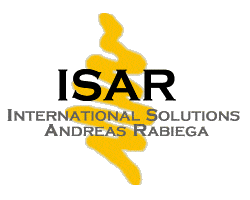Organizational development and management consulting
systemic organization development
The goal of system-safe organisational development is to initiate and accompany long-term and sustainable learning and renewal processes. Systems (organisations) should become viable, more successful and more efficient. An organisation develops exclusively from within. External influences are only perceived by the organisation and used as an occasion if the organisation opens itself to them. The development process in an organization should be long-term, continuous and comprehensive and should be shaped by the direct participation of your employees and their knowledge. This engages your employees. Therefore, the skilful entrepreneur should measure the company's goal in economic success but always keep the employee orientation in mind.
With our many years of experience in organisational development, we offer you resource- and solution-oriented support. Together with you, we develop custom-fit solutions for you and your company.
Possible consulting issues can be:
- Vision and mission statement development in times of digitalization- Process optimization in the 21st century
- Building a culture of responsibility with new accountabilities
- Leadership development in times of constant change
- Digitalization and automation of work processes
- Being an attractive employer and retaining the best talents
Organizational development includes the development of structures and processes. Likewise, the development of a corporate culture with which your employees identify. By means of a/your corporate strategy you determine the success. Tasks include team development and reorganization as well as change management and implementation of a new or different corporate culture.
Recurring questions are:
- How do we adapt our structures and processes to the planned growth strategy?
- How do we introduce change management in the company without losing the best employees?
- Should the processes in the company be/remain centralized or decentralized?
- Updating our mission statement in the age of digitalization
- Realigning and optimizing our cross-functional collaboration and communication
- Are we fit for the acquisition of creative personnel?
- Where do we stand? Are we a learning organization?
(Corporate) knowledge is a very important production factor. Knowledge in your organization increases effectiveness and efficiency and thus ensures the continued existence of your company. However, knowledge needs to be organized, expanded and accessible. Develop a corporate culture and a technical environment to use your knowledge, to increase it and to make it always available.
But of course the question arises to what extent knowledge management makes sense for your company? What options are available to you and how do you motivate your employees to participate in knowledge management, i.e. to share and use knowledge? In the context of a project for the introduction of knowledge management, you have to ask yourself how to implement knowledge management sustainably and in the long term? We would like to answer this question together with you.
- What knowledge should be available in the company?
- Which technical and content-related possibilities are necessary?
- How do I generate interest in using but also sharing knowledge in the company?
- What is the best way to introduce and implement knowledge management?
- How do I generate long-term acceptance and benefits in and for our company?
We accompany you systemically in the introduction of knowledge management and its technical processing. In this way, we work together to ensure the success of your company.
The systems in force to date no longer reflect the current socio-political situation. In addition to economic, social and societal issues, ecological aspects must also come to the fore.
The model of the social market economy as the German economic and social model has proven itself in principle. However, the system was conceived in a different time than today. In the post-war period, with the experiences of National Socialism, the aim was to moderate state intervention in the economy and to balance the burgeoning capitalism in a socially acceptable way. During the reconstruction, this concept released incredible forces and led society into economic and social stability as well as general prosperity.
But at whose expense? Man and nature, nature and man are increasingly strained, affected and not least exploited.
Today, in addition to general prosperity and growth, we need to protect our livelihoods in the long term. Does sustainability play a role in your company?
Sustainability is also the guiding principle for government decisions. The social market economy no longer fully reflects our economic and socio-political reality. Action within the framework of the social market economy must be expanded ecologically. Ecology must be placed on an equal footing with economics and social affairs.
Sustainability is the order of the day. In 2016, the seventeen Sustainable Development Goals (SDGs) set out the political objectives of the United Nations (UN) to ensure sustainable development at the economic, social and ecological levels. These goals apply to all countries in the world.
We would like to work with you to develop and implement these goals.
In recent years, the framework conditions for organizational development have changed fundamentally. Increased globalization, new communication technologies, the development towards a service society as well as new processes in work and business organization inevitably lead to new thinking and new solutions.
For all of us, the digitalization of our workplaces, volatility, organizational ambidextry (being flexible and consistent at the same time) and agility are major change processes. Are you and your company prepared for this or is the change process still waiting for you?
Change management refers to the consciously controlled process of accompanying and shaping changes in an organization. Whether you want to make changes in the structure of your company or improve internal/external communication. You must
always pick up your employees and convince them of this process.
Changes are not temporary, they are daily work. The world is changing constantly and ever faster, so we must also be able to react constantly and quickly. Well-functioning change processes prepare you for the coming steps and are decisive for your success in the company.
However, changes first trigger uncertainty and resistance. Use the energies from the resistances positively. Proceed in an appreciative, transparent and integrative way. We support you in all areas and at every step of the process.
Together with you we design the processes and accompany you and your employees in all phases of the change process.
- Which methods and modules do you need to develop in your organization so that you come through the transformation resilient and strengthened from within?
- Which innovative energies can you and your employees release in your company to be successful in the future?
- Look at your company from the meta level and check where you are in the change management process.
Change stands for further development. Further development is essential in order to remain fit for the future. The process of change is a comprehensive and relationship-based challenge with some stakeholders or affected parties.
- Getting to know new ways of thinking and acting: Which modes, which skills and which corporate culture promote transformation?
- Practical transfer: What does this mean concretely for a company? What are meaningful next steps in transformation for you and your employees?
- Exchange of experience: How do other companies and industries experience and deal with the tensions surrounding transformation?
- Transformation experts: Sharing your expertise and years of experience in dealing with transformation.
- Research: What is the current state of research on the topic?
- Exclusive networking in a small circle: Exchange with other executives and transformation stakeholders.
Change Analysis
Where is your organization in the transformation process and where is there a need for change?
The change process stands and falls with this analysis.
Change-Design
Together with you, we determine the starting point and all those involved. We develop a tailor-made concept for your change process. In doing so, we determine all framework conditions and the approach.
Building on the diagnosis, we develop:
Action management
Together with you, we implement the planned changes systemically and effectively. In doing so, we want the continuous involvement of all those affected and a transparent, consistent communication structure.
Corporate culture and mission statement
The change becomes a culture of the present when your employees live it every day, i.e. when it is anchored in the corporate culture. This leads not least to an adjustment of the mission statement of the organization and thus the USP (unique selling proposition).
All measures should be designed to ensure that your employees internalize the new culture in their thoughts and actions. We would like to guide and accompany you safely through your change processes. In doing so, we help you to establish the changes so that you can establish sustainable solutions in the long term
Are you innovative? Does your organization produce innovative products, solutions or solution strategies? Important for innovative processes is your organizational culture. This includes the attitude in/to the company, habits but also the lived values of the management and the employees. What are the communication processes and what is the character of your management culture?
In times of networking and sharing, vested interests and long (information) paths are outdated thinking. This thinking prevents the introduction of innovative processes, procedures and technologies. Do you create or maintain a basic attitude that takes learning for granted and recognizes problems as opportunities to meet new challenges? Secure your and your employees' jobs today and lead your organization into the 21st century.
Every three to five years you should examine the processes, techniques, products/services and employees in your company as well as the markets to see if they are attractive and up-to-date. Question yourself and your processes and explore whether you would choose to do so today. If your answer is negative (please be honest) then you should start researching more effective ways of using your operational resources. Should unprofitable lines of business perhaps be divested? Are there new profitable lines of business worth investing in? Are your techniques and technical tools still up to date? What is the degree of digitalisation in your company and work processes? Companies, markets, machines and employees have a limited life expectancy. Analyze the respective life cycles with us and develop innovative strategies for the future.
Presentation as an event
Do a lot of presentations also seem boring to you and do you often wonder what they should be? Power Point was once the guarantor for lively presentations. But the inflationary use and the simultaneous non-use of all features cause disinterest. With us you will learn how to make your presentations lively and interesting. The most important thing in the presentation is you! Then comes the topic and its preparation. You can and should continue to work with Power Point but correctly.
We will give you valuable tips on how to handle and use Power Point and other presentation tools and methods.
- Avoid boredom
- Set yourself
- Tell a good story
- Build suspense
- Reduce your content to the essentials
- Pay attention to the interest and receptiveness of your audience
- Involve your audience
- Discover the entertainer in you
- Other presentation tools
Effective presentation methods for the respective target group
Creativity Techniques
What if? This is a question we ask ourselves very often. But how are we going to find a suitable and/or plausible answer to it? As children we dreamed and painted the world in the most colorful colors. Today we have to deal with the future and make decisions that affect the future. But the information we have is from today. Will this information help us to understand the world of tomorrow? This lack of knowledge unsettles us personally but also companies when developing strategies. Companies that have avoided forecasting the future are now finding that continuity is dissolving. INTERNATIONAL SOLUTIONS would like to work creatively with you on the future. To this end, we use the following techniques:
Intuitive methods
o Provocation Technique
o Negative Conference
o Collective Notebook
o 365 Method
o Edison Principle
o Gallery Method
o Bisociation
o Bionics
o Synectics
o Tilmag Method
o CATWOE
o Analogy Technique
Discursive Methods
o Morphological Box
o Osborne Technique and SCAMPE(R)
o Relevance Tree Analysis
o Progressive Abstraction
o Force Field Analysis
Combination methods
o Lateral thinking
o Thinking hats
o Walt Disney method
o TRIZ and ARIZ
o Future workshop
Companies have to act and react innovatively and quickly. It is not uncommon for the market to require entire organizations to change. But can you find good personnel as quickly as you need them? Can you find personnel who are available for a certain period of time?
As an interim manager, I would like to lead and develop your company together with you. Due to my three academic educations and many years of practical experience, I always have my finger on the pulse.
- What trends in personnel policy are setting the agenda and how do you use freelancers as experts, for example?
- Which functions are essential in your company?
- What is the situation regarding digitalisation in your company?
- What future strategies have you already developed or are you working on?
I would like to fill a personnel bottleneck for you and with you.
In doing so, I would like to:
- initiate an upcoming realignment
- manage a new project
- carry out a restructuring
- prepare a merger
- or simply support you with special topics.
Please speak to me.

Welcome to the 21st century
In order to find our place in the 21st century we have to adapt and probably also change. Transformation is the keyword. But transformation also means transition. For the transition into the digital age, we need to create connections, synchronize and put all the pieces together. That involves coordination and cross-functional interaction. What happens outside your organization, what happens at your competitor's, must also find its way into your company.
Your catalyst

Contact
- +49 415-865-0774
- andreas.rabiega [@] international-solutions.org
Write to me
simply make contact and get started





